NamCompendium is an attempt to survey the output of NAMCO from October 1978 to present. The primary goal of this work is to provide as authoritative of information as possible for Giant Bomb’s Wiki, with the secondary goal of considering the relative merits of individual games. In this issue, we cover a game so good it was included in a fobbed off gag in one of those superhero movies you kids like so much.
After wandering in the post-Pac-Man wilderness for two entries, we return to the promised land. Galaga is the final step along the evolutionary path, the apotheosis of the fixed position subset of shooters sired by Taito's Space Invaders three years prior and improved by Namco's own Galaxian in 1979. Galaga trumps both, and is the second masterpiece in the company's history.
For the purposes of this entry in the NamCompendium, I am blessed with the good fortune of this widely celebrated game being grouped into the shoot-em-up family. Therefore it has been covered in great detail by Shmuplations.com, a fantastic resource for translated interviews with developers of Japanese arcade and console games throughout the years. Putting together information on the roots of Galaga's arcade debut is therefore less an exercise in conjecture than it is act of cribbing together some of the more pertinent notes for this piece.

Thus, we come to the man most responsible for Galaga's existence: Yokoyama Shigeru, a Namco employee whose previous works include surrealist pinball (Cutie Q), defending an unspecified monarchy (King & Balloon), and desperately attempting to juice a turnip for anything of value (New Rally-X). By his own account (recorded in an interview done to honor Galaga's 30th annivesary in 2011), Galaga was originally conceived of as a way to repurpose a surplus of Galaxian/King & Balloon PCBs stockpiled by Namco. He had a rough idea for what the game would be about two months after completing K&B, and was working with the guidance from Namco management to make "one more game like Galaxian".
So the design work began, and based on the scope of the project it became clear that the hardware made to support Galaxian would not be adequate to host the features desired in this new title. The breaking point was auto fire, which was not possible on the older board. Once it was determined that new hardware was necessary, Yokoyama gained more headroom to innovate on Galaxian's feature set to create a distinctive play style. He described the fundamental "game" part of Galaxian being the part where the player had to weave between shots and manage diving formations to maximize scores, and thus thought that simply rehashing those elements themselves would not make a special game. He hit on the idea of trying different enemy attacks, and ultimately was taken with the idea of a tractor beam.
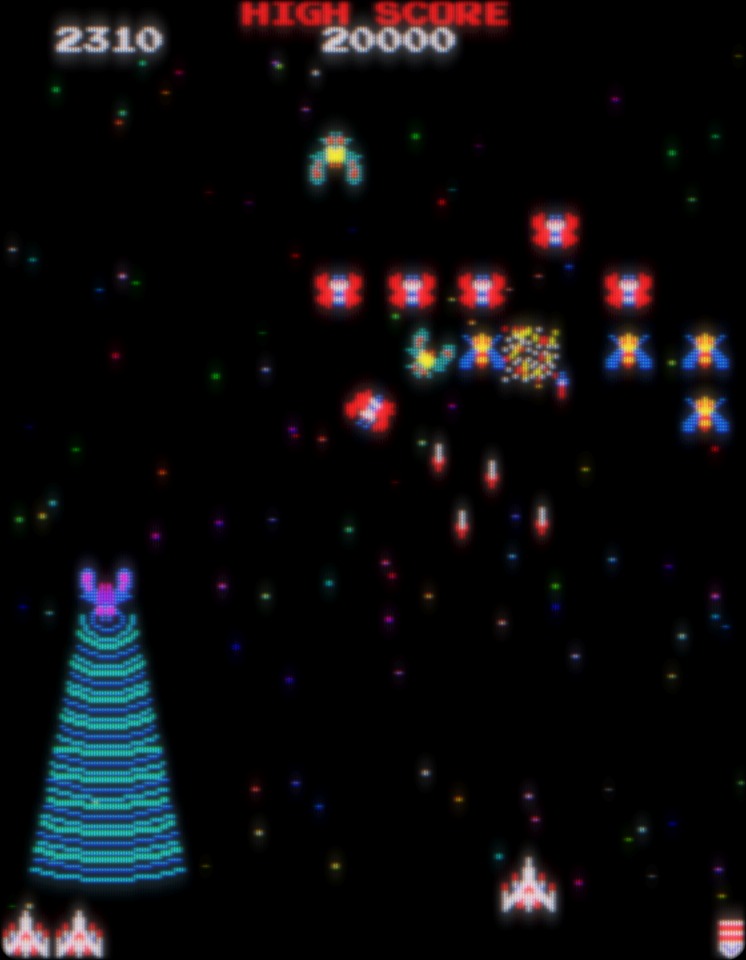
The tractor beam gambit lies at the beating heart of Galaga. It is a brilliant design choice that almost singlehandedly earns it a place in history. At periods, an enemy craft will fly to the bottom of the screen and hoover up the player's craft (and the associated life). The player is compelled to either avoid this tractor beam, or rescue the captured ship. At first the rescued ship provided the player with an extra life. But Yokoyama saw this as too boring of an idea, as it was basically an extension of the same old extra life concept present in many titles for achieving certain amounts of points. Then came the big idea: dual fighters. Rescuing the player craft results in a bizarre two-shipped sprite at the bottom of the screen which allows for twice the firepower with the tradeoff of twice the surface area for enemy attacks to stick. Thus, a risk for a reward. In this case, however, the risk/reward calculation is stacked upon the already robust decision stacks required in Galaxian. There's even the more subtle question of when to engage with this mechanic: do you strive for the maximum amount of firepower from the earliest point, or wait until just before the CHALLENGING STAGE missions (returning here from their first, far less welcome iteration in New Rally-X)? It all works in concert to comprise my personal favorite game covered so far in this series.
I'd go so far as to say the strident music that opens the game surpasses the opening jingle of Pac-Man. There's a rich, organ-like texture to it that sounds more like a mid-1980s Capcom arcade game than a 1981 title.
I would strongly encourage anybody interested in learning more of the history around this game to read the aforementioned Shmuplations interview. And while not as exhaustively detailed as this site's own Pac-Man Wiki entry, Galaga is a fairly well documented game that has required not a lot of input from myself. With that in mind, let us examine the many ways in which one might encounter Galaga.
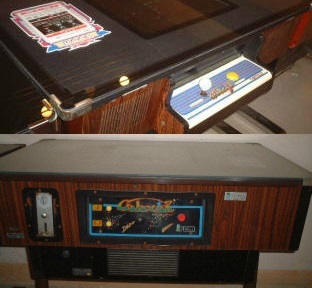
The game arrived in Japanese arcades in September 1981 with distribution by Namco. Bally-Midway was given the distribution rights in North America, and was brought to market in December 1981. It sort of goes without saying that the arcade release was a phenomenon, but Galaga's arcade legacy was such that the game was bundled and rereleased in cabinet form twice over the course of two decades. But first, there are a few home ports to consider. Here we must become reacquainted with our favorite nightmare video game company, Atari.
Somewhere lost to time, an unspecificed engineer or team of engineers was handed the unenviable task of smooshing Galaga down onto a 2600 cartridge. This effort was assigned an official catalog number, CX26116, and is attested to throughout the enthusiast site AtariAge. However, this title never did wind up receiving a full release and I have been unable to find a dump of a prototype on the Internet. Given how Galaxian performed on the VCS (along with similar-ish titles like Phoenix and even Demon Attack) it is difficult to imagine 2600 Galaga being much of a port.
Instead, the first home port of Galaga went someplace truly exotic. Yokoyama's shooter is the first and only Namco title to be released on Sega's first home console, the SG-1000. Given Sega's propensity to develop titles in-house for its hardware during the early years of its home market efforts, I am not certain that Namco handled the development of this port. An interesting frame of reference here might be the illegitimate port of King & Balloon to the Korean release of the Sega Mark III, given that this fan made title utilizes the SG-1000 interoperability feature of the Mark III. Whereas K&B felt like a decent fit for the platform given the constraints of its underlying hardware, Galaga feels stifled here. Yes, there is a desperate attempt to squeeze the Galaga jingle in at the start of play, and the enemy sprites are varied to an extent. The issues crop up quite quickly from there. The playfield is contrained on both axes, enemy formations enter in the same manner in every level until the end of time, the CHALLENGING STAGE levels are gone, and ultimately once you've gotten your second ship the game becomes an infinite shooting gallery. An early title in the short SG-1000 catalog, Sega-Galaga wasn't even as good as the previously released Star Jacker on the same platform.
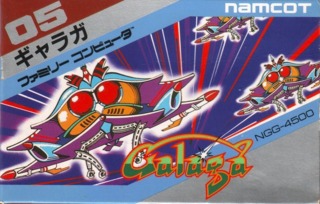
Star Jacker, and indeed the entire Sega home console output, were in direct competition from day one with Nintendo'sFamicom in Japan. Namco and other third party video game companies clearly saw the way the wind was blowing by the end of 1983, and we've already covered the first Namco titles for Nintendo (Galaxian and Pac-Man). For reasons not clear to me, Namco took a moment to port Galaga to the Famicom. As mentioned in previous entries, Namco used a bespoke numbering system for their first eighteen titles on the platform. Spots 03 and 04 went to Xevious and Mappy respectively, both of which were released in November 1984. Galaga landed on Japanese department store shelves at long last on 15 February 1985, with 05 emblazoned on the box art.
What seems like an eternity ago, I cited Galaxian as influential on the fundamental design of the Family Computer. The platform plays a very good game of Galaxian. It does a less impressive job with Galaga, in my estimation. Foremost in my mind, the sound has taken a battering. The Famicom had yet to receive any late-coming additional chips in cartridges that augmented its sound capabilities, and the native hardware cannot match the arcade original in its opening jingle or the capture jingle. Furthermore, the game feels like a fair deal of the arcade sound effects are missing. The strange wubs and chimes of the alien creatures created a brilliant "arcade feel", and without those the game feels almost silent. Still, the gameplay survives much more intact than the SG-1000 port. Attack patterns vary, the game ramps up in difficulty over time, the CHALLENGING STAGE interludes make their home console debut, and the background star field parallax makes a welcome return here. This outing was good enough that, in a spurt of rereleases I really should explore more deeply, Namco reissued the game in a series of six early Famicom titles for the Famicom Disc System on 22 June 1990. By that point the FDS was an outmoded device, so this batch of releases puzzles me. Nevertheless, Galaga for the Famicom holds up well enough that when Nintendo decided to reissue a collection of games on the Famicom Mini in 2016, one of thirty spots was reserved for Galaga in all regions.
A version of Galaga that does not hold up as well emerged for the Atari 7800 as well. The story behind it, being bound to an Atari device, is a goddamn mess. I cannot wait to be through with Atari forever.
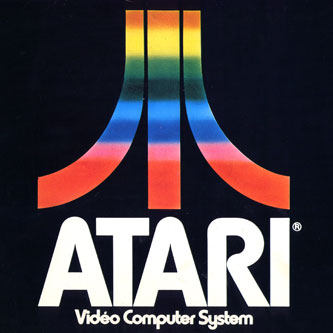
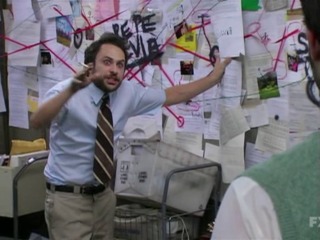
Alright, to recap in brief: Atari, Incorporated was a company founded by Nolan Bushnell and Ted Dabney in 1972. That company was sold to Warner Communications in 1976, and Bushnell left in 1979. After a series of profoundly bad managerial decisions over the course of five years, Warner sold off parcels of the Atari brand in 1984. Jack Tremiel, recently ousted from Commodore (which he founded), purchased the home computer and game console divisions and rebranded them as Atari Corporation. The arcade games business was sold to Namco in 1985, and it was this parcel that sired Atari Games, Tengen, and a war of legal attrition with Nintendo as covered in NamCompendium 4.
Something stupid happened in the limnal period amidst the sale of Atari's home division to Tremiel, if you can believe it. Losing cash hand over fist for Warner, Atari sought a product that would get them out of the red in a hurry. They tasked General Computer Corporation with throwing a hail mary for the company. GCC had been brought to heel under Atari as the result of a mid-1981 lawsuit settlement over their distribution of an unlicensed aftermarket kit to modify Atari's Missile Attack arcade machines, and wound up developing several ports of Namco games for Atari platforms over the years (we first encountered the company in the Galaxian entry of this project). Incredibly, GCC managed to produce a new console under considerable time crunch: a device originally known as the Atari 3600. The device was quickly rebranded, in keeping with Atari's idiosyncratic console numbering scheme, as the 7800. Based on a 6502 derivative, the device was very roughly comparable to Nintendo's Famicom. Said system had yet to make it across the Pacific, but the American home console market was very much still in a crater when the 7800 was first shown at the Summer Consumer Electronics Show in May 1984.
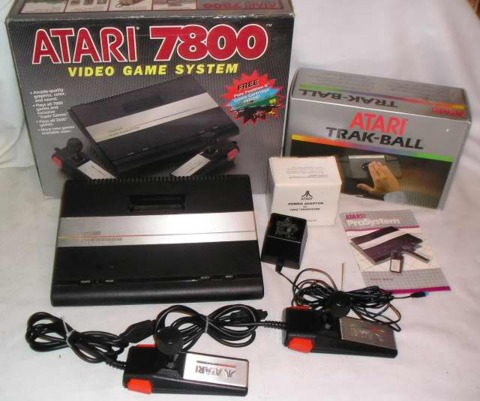
And now, the stupid. The 7800 actually received a commmercial test market release in June 1984, on store shelves in southern California. Thirteen games were available at launch for the platform, including four or five Namco games: Pole Position II, Dig Dug, Xevious, Galaga, and Ms. Pac-Man. If you think this shit's a mess, just you wait until Ms. Pac-Man. And so, given the Nintendo test market launch is used as the official launch date for the NES is North America, the case could rightly be made that the aforementioned titles are all June 1984 titles. It should be fairly straightforward. Nothing should really be complicating this.
Atari complicates this. A month after the 7800 launch, Warner sold Atari's home console division to Tremiel's new concern, Tremel Technology Ltd. As he had acquired what was a burning house with some name recognition for a song, his first act was to put the breaks on all projects and begin the process of gutting the place of all dead weight. The 7800 was mothballed straight away, and Jack pushed the company to produce a 16-bit home computer platform that would compete against his former Commodore offerings (this eventually did yield the modestly successful Atari ST line of computers). In the lurch of reorganization, it came to light that Atari had failed to pay GCC for their work on the 7800. Which Atari? Now you're seeing the madness. Tremiel asserted that Warner, who in this interval still owned Atari's arcade properties and had originally ordered the work, owed GCC for any work done, and that he had effectively purchased the rights to their products in the sale. After several months, in May 1985, Jack Tremiel did something remarkable: he relented, and GCC was paid out of Atari Corp.'s pocket. Then, the individual games developed by GCC were up for more negotiations. These were eventually settled in November that year, and Atari Corporation was now free to do as it willed with the 7800. In the interval, Nintendo had brought the NES to North America and Jack felt there was money in the home console banana stand once again. So it came to pass that the mothballed 7800 consoles of mid-1984 were given a second test launch in January 1986, followed by a muted wide release in May the same year.
So, Galaga was released twice for the 7800. Two years apart, by completely different companies bearing the Atari name, after squabbling over the rights to distribute it. Excellent.
And you know what really makes this incredible? It's not a great game! Granted it was developed as a 1984 launch title for new platform with severe time constraits, but when you couple the slow pace of play with the unfortunate decision of recycling the 2600's sound hardware into the 7800 you wind up with a discordant and dull version of a thrilling game. I'd play the SG-1000 version of Galaga over this in a heartbeat, no question. Lots of preamble there for kind of a wet fart as the payoff, but there was simply an inexorable amount of bullshit in the narrow window of time that Namco had dealings with Atari.
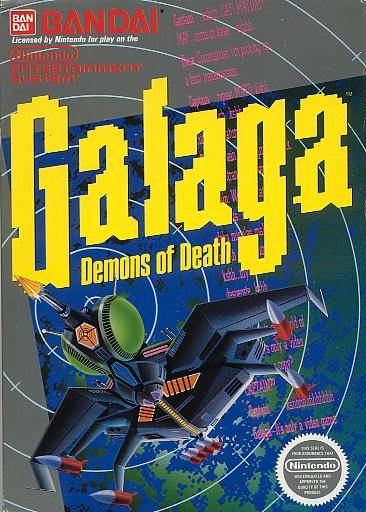
Galaga's North American release on the Nintendo Entertainment System manages to pull off a NamCompendium First to spice this entry up a bit more: here is the first time I will write the word Bandai. The two companies worked with each other for distribution purposes well prior to their merger in 2005, and Galaga is the first incident of this cooperative spirit manifesting in the NamCompendium. Naturally this is just the Famicom game dumped onto a different board and slapped into the housing of a gray NES cartidge, but as mentioned above this is the best home port Galaga received. Bandai also distributed the title in Europe, where it was reviewed in the French games magazine Joystick in April of 1990. They gave it an 80, or 4 stars if you're a fan of this site.
Galaga did not receive the same staggering amount of standalone ports and re-releases as Pac-Man, and most of the rest of this piece will cover compilation appearances. The first of these was the 1995 release of Namco Museum Volume 1 for the PlayStation, and here I'd like to add a point of clarification. The titles included in the Namco Museum titles for the PS1 were in fact ports of code, rather than arcade dumps. This is evident by the fact that the games play in landscape aspect ration instead of portrait, with score information and the like set in a column to the right of the play field that was otherwise set at the top or bottom of an arcade screen. These releases allow the player to fiddle with virtual arcade dip switches to modify game options around the number of lives stocked at the start of play, scores needed for extra lives and so forth, and also allow the player to flip the display 90 degrees to achieve something that very nearly achieves arcade perfection. The music is a little muddy in each of these compared to arcade source, but otherwise I have found these releases to be my preferred way to play these early Namco arcade titles for this project. Grabbing them digitally lets me play them on my Vita and PS3, which suits me just fine.
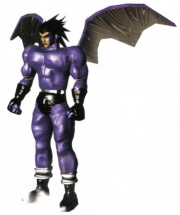
This wasn't the first appearance of Galaga on the PS1. That occurred on 31 March 1995, when Tekken was first released for the Japanese PlayStation. Based on PS1 hardware, the Tekken arcade machine had only launched three months prior to its PS1 debut. Galaga shows up here as a loading screen game, eight months before Namco filed its infamous patent on the very concept of interactive loading screens. Defeat eight levels of CHALLENGING STAGE fun with 100% shootdown rates and you can unlock Devil Kazuya. This feature sort of came full circle twenty years later with the mobile release of Galaga: Tekken Edition.
Galaga next shows up in two separate Game Boy releases. First came Arcade Classic No. 3: Galaga & Galaxian, a July 1995 which packages both titles onto one cartridge with Super Game Boy support. Here Galaga plays like an improved SG-1000 port, but with better music and the CHALLENGING STAGE interludes intact. Not bad at all. Second, and here's one I'll need to apend to the the Galaxian piece, the game was bundled into the Namco Gallery series of Japan-exclusive Game Boy releases that started with Namco Gallery Volume 1 in August 1996. Sort of a scaled down version of the Namco Museum series, the Namco Gallery series repackaged Namco Famicom titles into four game compilations with Super Game Boy support. Galaga joined Mappy, Battle City, and Namco Classic in the first volume. I'll be damned if I can spot or hear any real difference between this as the version bundled with Galaxian a year prior.
In between these seemingly identical Game Boy outings, Galaga made a return to Japanese arcades. It was repackaged with Xevious and Soul Calibur 6 shoo in Mappy, into Namco Classic Collection Volume 1 in November 1995. This release includes the original (with sound that sounds slightly off but otherwise wholly intact) and Galaga Arrangement, a buck wild reimaginging of the original game that feels more like it takes Galaga '88 as its starting point than the original. This Galaga Arrangement is not to be confused with Galaga Arrangement as featured in Namco Museum Battle Collection, which was a separate concept that was subsequently ported to mobile platforms as Galaga Remix.
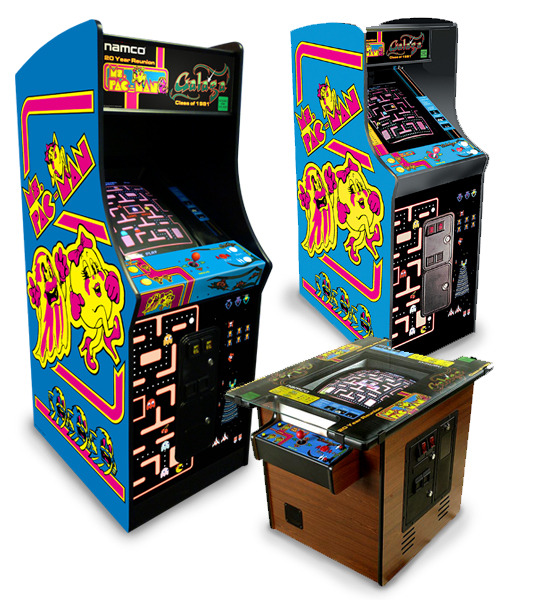
Not quite done with building arcade cabinets, Galaga received the honor of a third release into bars and pool halls as part of a "20 Year Reunion / Class of 1981" machine which packed Galaga alongside the not-exactly-Namco game Ms. Pac-Man. The only real change to this version is the ability to continue play after being defeated by feeding quarters into the machine, which was not possible in the 1981 release. If you haven't seen an original Galaga in the wild, I'd bet you dollars to donuts you've seen this machine. It's a hell of a thing, bundling two of the greatest games ever made into one standup cabinet well after such things were in fashion.
From here, we enter properly into Namco's "compile our old games" period. Take it away, Bullet-List-o-Matic!
- Namco Museum 64 (October 1999)
- Namco Museum (DC [2000], PS2, GBA, GCN [2001], XBOX [2002])
- Namco Museum (PSP, 2005 [JP])
- Namco Museum Battle Collection (PSP, 2005 [NA and EU])
- Namco Museum: 50th Anniversary (PS2, GBA, GCN, XBOX, 2005)
- Namco Museum DS (DS, 2007)
With the advent of digital distribution, Galaga reemerged as one of a small sampling of Namco's golden age titles to receive standalone releases. It first appeared on Xbox Live Arcade on 26 June 2006, two months prior to Pac-Man's standalone arrival. From there it was rolled into Namco Museum Virtual Arcade on 4 November 2008, and as an XBLA download game it features discrete achievements. It appeared again as part of the Namco Museum Essentials compilation on PSN, first distributed as Namco Museum .comm via Japanese PSN on 29 January 2009. On Nintendo's side of things, the Famicom/NES port was released on the WiiVirtual Console in North America on 9 April 2007, and the arcade version landed on the Japanese Virtual Console 24 November 2009. If you preferred to play Galaga off a physical disc on Wii hardware, you were limited to the North American exclusive release of Namco Museum Megamix in 2010.
Galaga next came to the 3DS as part of launch window compilation piece Pac-Man & Galaga Dimensions, a 23 June 2011 release in Japan that arrived in North America a month later. A title from that early period in the 3DS lifespan where games weren't guaranteed a digital release (Ridge Racer 3D and Tales of the Abyss are other Namco titles from this period that remain physical only), this is fortunately not the only way to play Galaga on your 3DS. In addition to Namco Museum DS being backwards compatible, the Famicom/NES port was released on the 3DS Virtual Console on 22 May 2013 in Japan and 13 March 2014 in North America.
Likewise, you've got three options to play Galaga on your now sadly outmoded Wii U: backwards compatibility via a physical copy of Namco Museum Megamix, or via the Virtual Console through either the Galaga port to the NES (released in 2013) or the Namco Museum compilation for the GBA (released in 2014).
Galaga came to the PlayStation 4 and Xbox One digital store fronts on 20 April 2016, in its original arcade form. This release was packaged onto a physical disc for both platforms that November, alongside Pac-Man Championship Edition 2's physical release. Finally, the most recent appearance of Galaga came as part of the Namco Musuem release for the Nintendo Switch on 28 July 2017.
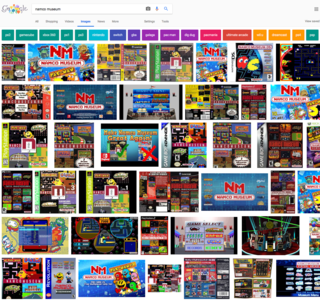
(For those keeping score, there are six different releases with the same name, "Namco Museum": the first for the Dreamcast in 2000, followed by the GBA, PS2 and GameCube in 2001, the Xbox in 2002; then the unrelated Namco Museum for the PSP in Japan in 2005 [repackaged with Namco Museum Volume 2 for the PSP, not be confused with Namco Museum Volume 2 for the PS1, into Namco Museum Battle Collection], then Namco Museum for the Switch in 2017. I hate myself.)
Galaga has thus been in constant circulation, if not quite as frequntly as Pac-Man, since it was first released in the fall of 1981. Rightly so, as it remains one of the pillars of the shoot-em-up genre and a high water mark for arcade gaming. Namco was a titan with the success of Pac-Man, but now it had delivered a followup to prove that it would not rest on its laurels. The list of games that come after Galaga include some real fire as well, and to cover them I'm going to take some chronological liberties.
The next edition of the NamCompendium will consider Bosconian and Dig Dug, the next two titles developed in-house by Namco. After that, I shall attempt to cover the first of what I've been calling the repatriated Pac-Man sequels: Ms. Pac-Man. If you think this was long winded, stay tuned for that one as it is going to be a monster. Until then, happy trails.
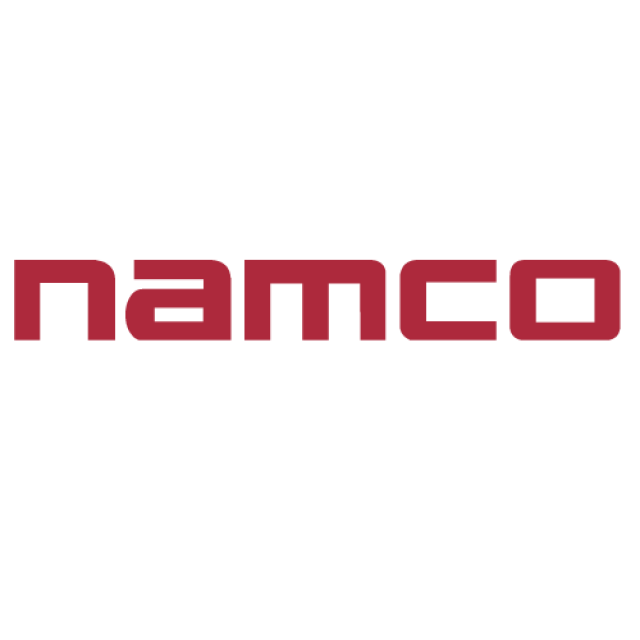
Log in to comment